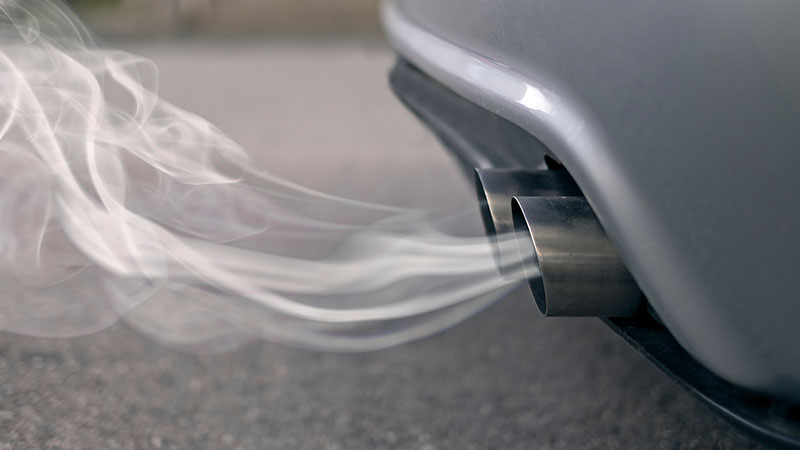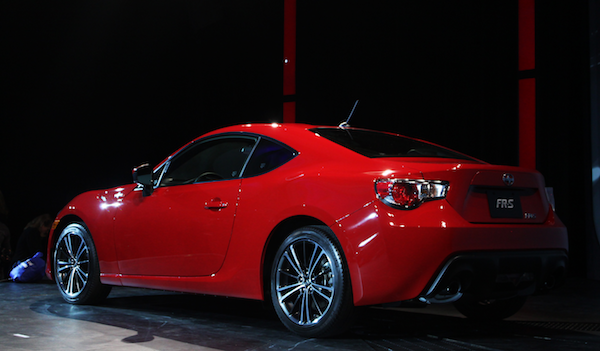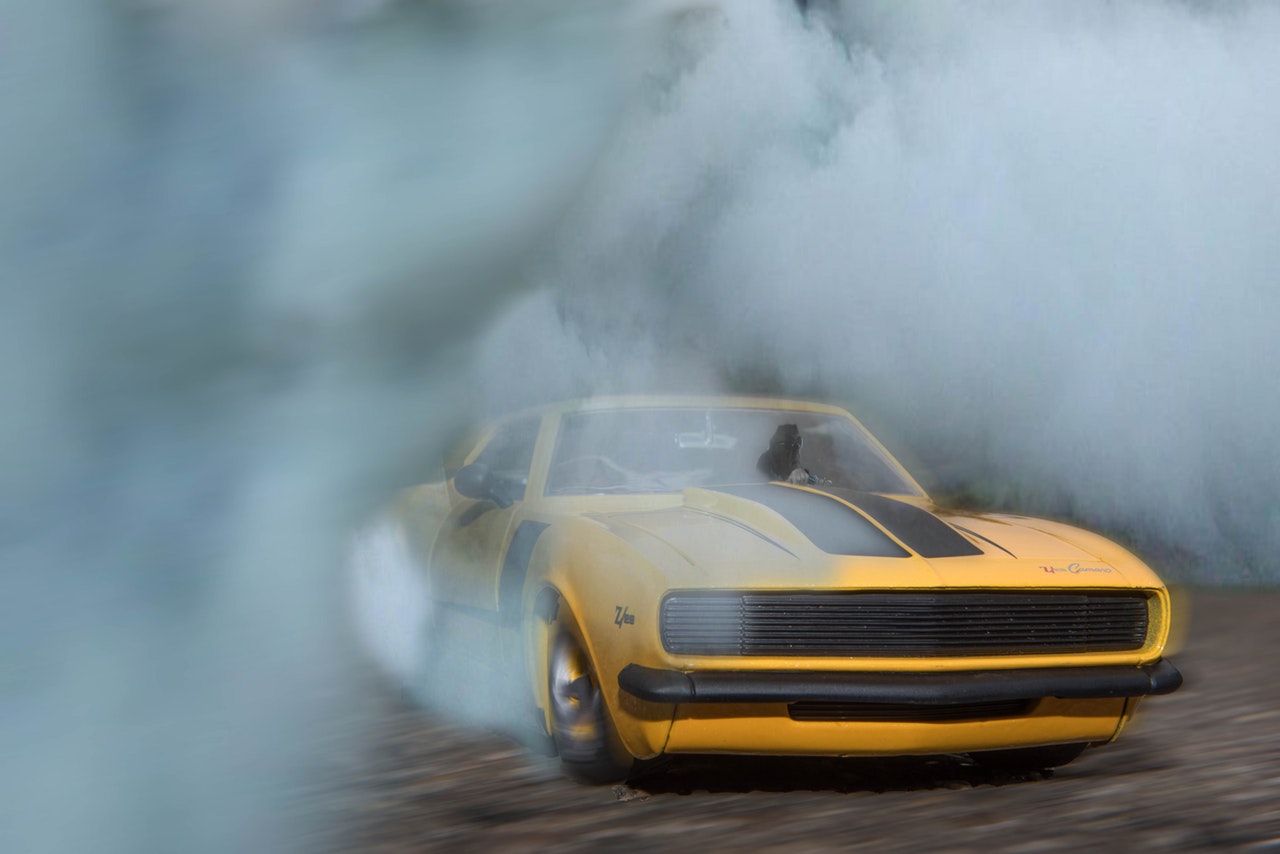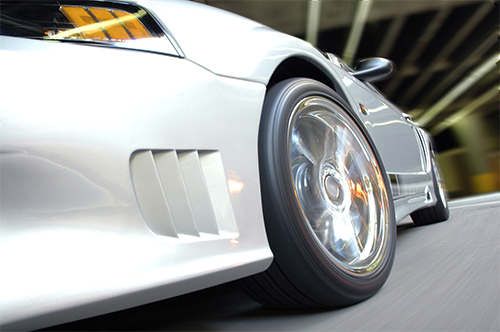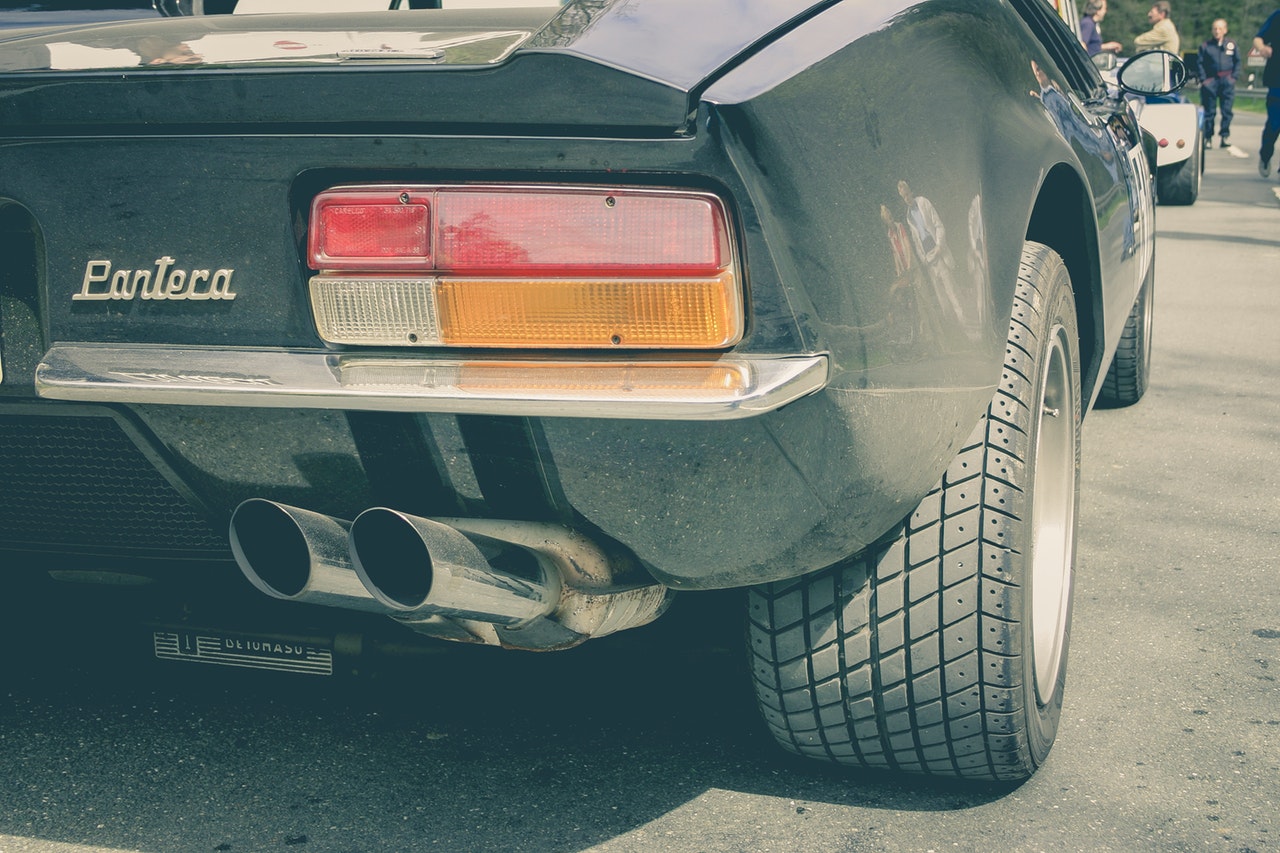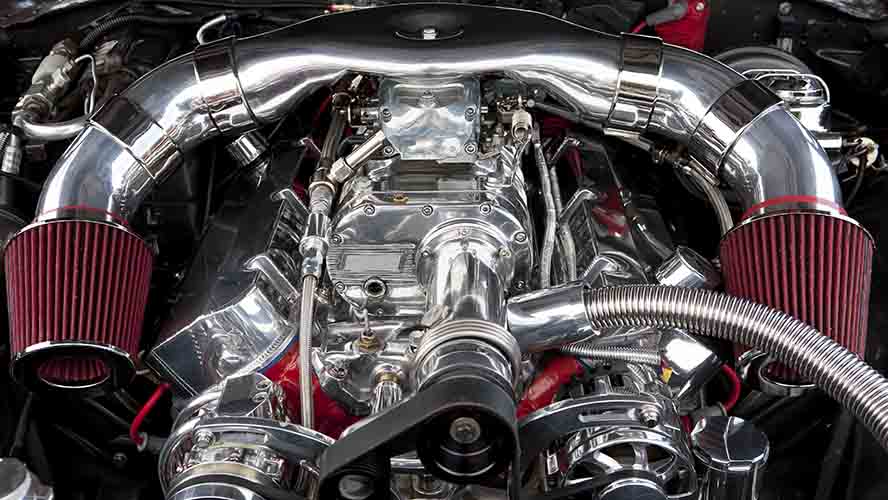What’s your sound preference? Mild? Moderate? Aggressive? No sound at all? Maybe you want a different sound depending on what and where you’re driving. You want an aggressive tone for your 1972 Dodge Charger that you lovingly restored and a “less noticeable” tone for the Subaru Outback you use to shuttle the kids back and forth.
No matter what your harmonic preference or what you’re driving, there’s a muffler that will deliver exactly the sound you’re looking for. Welcome to the world of mufflers and sound enhancements — increasingly popular modifications that can personalize your ride.
Smoky Exhaust Pipes | Source: Getty Images
A quick history lesson
Mufflers aren’t a new invention. Records from the U.S. Patent Office show that a patent for an engine muffler was awarded in 1897 to Milton and Marshall Reeves of the Reeves Pulley Company in Columbus, Indiana. Mufflers in the early 1900s featured a “straight through” design that is still popular today. Essentially, those early mufflers consisted of a pipe with holes wrapped in something similar to steel wool, with the pipe passing through an outer shell. A big change to that early design occurred with a switch to a fiberglass packing material in place of the steel wool. Contrary to the name, a muffler isn’t just muffling the sound. It’s actually destroying many of the sound waves. But let’s back up for second.
Remember to add your vehicle when you shop with Advance to find parts that fit.
HOW MUFFLERS WORK
The two types of mufflers that most DIYers have heard about are a chambered muffler and a straight through or “glasspack" muffler. Here are the differences between the two (and a third, just for fun):
1. Chambered Muffler
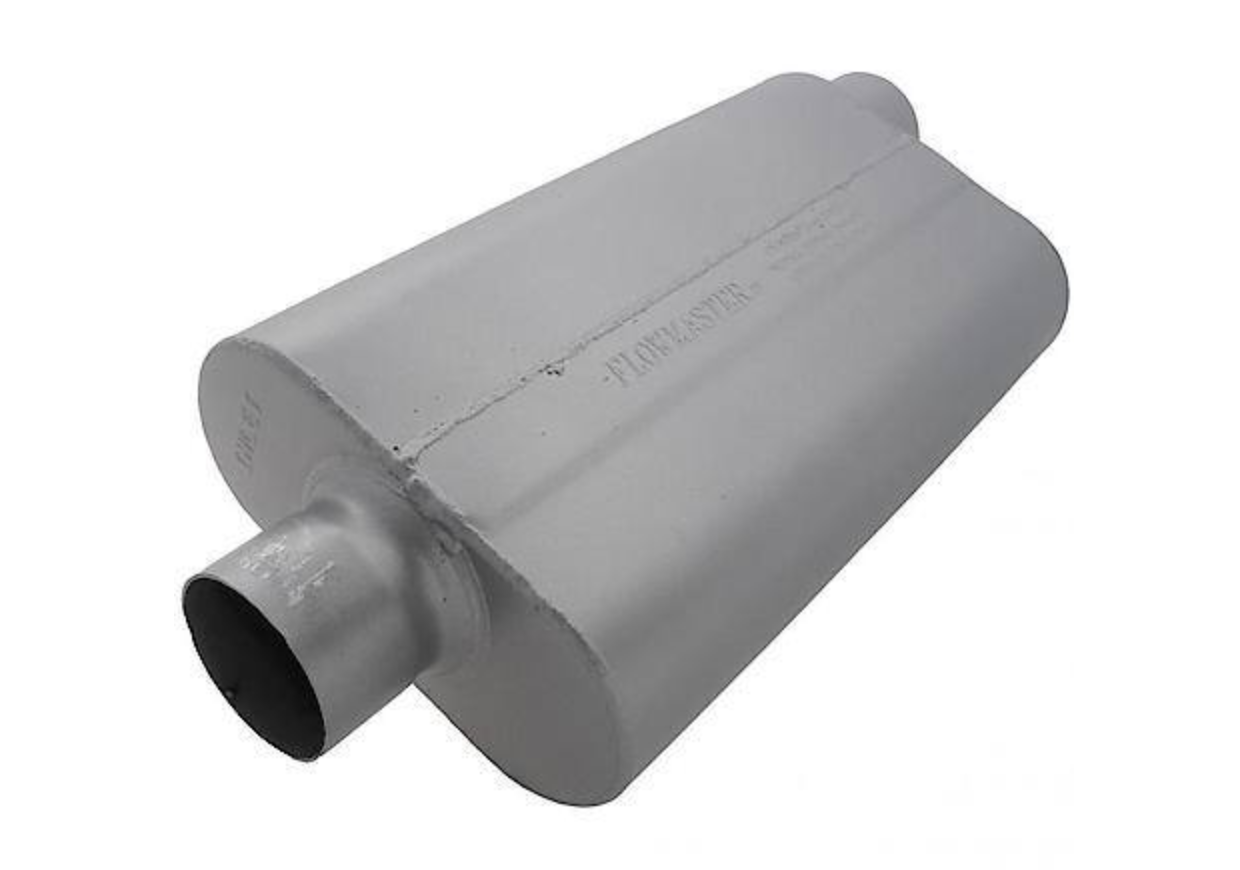
Flowmaster offers a range of chambered mufflers | Advance Auto Parts
In a chambered muffler, the sound waves generated by the engine at the end of the exhaust stroke enter the muffler and bounce around the muffler's various chambers. As they do, they encounter friction which destroys some of the sound waves. Some of the sound waves that aren't destroyed by friction bounce off a chamber wall and form a sound wave that's an exact opposite. Those two sound waves cancel each other out, further reducing the noise that the vehicle produces. Take a look at these chambered mufflers:
- Flowmaster 50 Delta Flow - The three-chamber design delivers the same performance as the aggressive two chamber mufflers, while creating a more moderate exterior tone and also minimizing interior sound, ideal for passenger cars
- Flowmaster Super 44 - Flowmaster's most aggressive sounding and powerful two-chamber street muffler uses their Delta Flow Technology to maximize power and fuel efficiency
2. Straight-through Muffler

The Thrush Glasspack looks as good as it sounds | Advance Auto Parts
In the straight-through muffler design, the sound waves pass through a straight pipe, with some of the waves being absorbed by the material surrounding the pipe, much like the earliest mufflers. We recommend these:
- MagnaFlow Stainless Universal Performance - get a smooth, deep tone from the acoustic fiber fill wrapped in stainless mesh
- Thrush Glasspack - go with the high-gloss red powder coat for a look that matches the in-your-face sound
3. Turbo Muffler
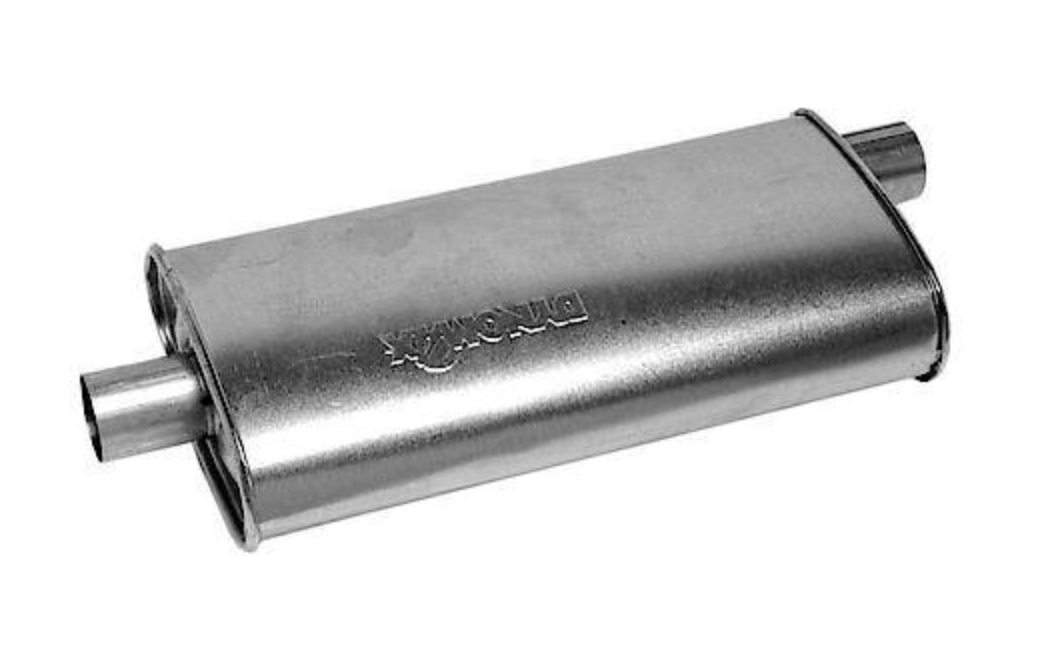
Dynomax Turbo mufflers combine raw power with a mellow tone | Advance Auto Parts
A third type of muffler design is a turbo style muffler in which the exhaust gases are forced into an s-shaped pattern and are peeled off and deadened by the muffler material.
- Thrush Turbo - Thrush has a Tri-Flow design that creates their distinctive, classic sound
- Dynomax Super Turbo - the large internal tubes allow freer exhaust flow and reduced backpressure for increased performance, plus enjoy the mellow, throaty tone
Different types of mufflers yield different sounds, and that's where personal preference and the type of vehicle enter the picture. Case in point, you'll find more glasspacks on vintage muscle cars than you would on a custom Honda Civic. Similarly, chambered mufflers deliver their own unique sounds depending on how many chambers they have and the chamber configuration, both of which determine which sound waves die and which escape to be heard.
BACKPRESSURE AND ITS EFFECT ON SOUND
The other consideration when choosing a muffler and exhaust system modification is, of course, backpressure. All those twists, turns and holes that the hot exhaust gases are forced through in the muffler slow down and restrict the gases' migration toward the tailpipe. That restriction results in increased pressure, which forces the engine to work harder to expel the gas, which leads to a reduction in power. Less pressure equals more power, and more sound. Begin your research by listening to as many different muffler sounds as you can, like the sound test of these eight Flowmaster mufflers that range from mild to wake-the-neighbors. Choose the one you like and rest easy knowing you can always change up the sound if you get tired of it (or get too many complaints).
WHAT ARE MY OPTIONS?
Thanks to advances in muffler design, you can now choose what kind of sound you prefer and even how loud it is. Most late model cars have a bolt-on exhaust system after the catalytic converters, so installing a new system that's engineered for your specific vehicle couldn't be easier. Many manufacturers now offer custom outlets, so you can choose one that matches your ride's exterior. The muffler is just one popular modification when it comes to tweaking the exhaust system, with headers, catalytic converters and tailpipes presenting other options.
Whatever you decide to modify, you'll be in good company because exhaust system upgrades are increasingly popular, and there are plenty of well-known suppliers in the game like Flowmaster, MagnaFlow, Thrush, and Dynomax. When you're shopping with Advance, be sure to add your vehicle to ensure a proper fit.
Have you modified your muffler? Leave us a comment and tell us about your experience.
